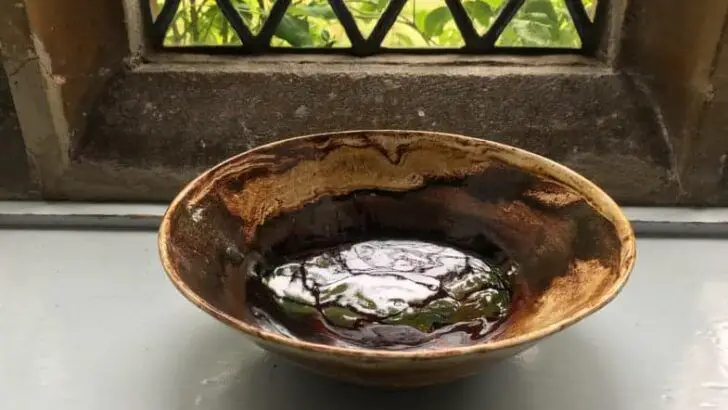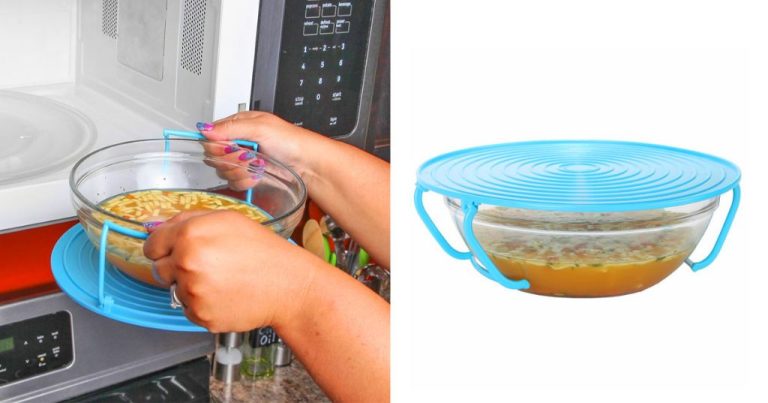Can Soft Clay Harden?
What is Clay?
Clay is a fine-grained natural rock or soil material that is plastic when wet and hard when fired or dried. Clays are composed primarily of minute mineral particles less than 0.002 millimeters in diameter.
The three main groups of clays are kaolinite, montmorillonite-smectite, and illite. Kaolinite clays contain mainly kaolinite mineral and are generally not as plastic or sticky as other clays. Montmorillonite-smectite clays expand when wet and can absorb large amounts of water. Illite clays contain a mixture of clay minerals including illite, kaolinite, and montmorillonite.
Clays exhibit plasticity when mixed with water in certain proportions. This allows them to be shaped or molded when wet, and to retain their shape when dried or fired. Plasticity, stickiness, and hardness are key properties that make clay a versatile material for pottery, ceramics, and construction applications.
Clay’s Plasticity
One of the defining characteristics of clay is its plasticity or ability to be molded and shaped without breaking. This allows clay to be worked into various forms and is what makes it so useful for pottery, sculpture, bricks, and other applications.
The plasticity of clay is a result of its chemical structure. Clay particles are platelike in shape, which allows them to slide over one another when wet. When clay dries, the particles move closer together forming strengthened bonds, but the original molded shape is retained.
Clay’s plasticity allows it to be pushed, rolled, coiled, thrown, extruded, and shaped in many ways without cracking or losing its form. Skilled artisans can form intricate and complex shapes using the plastic properties of clay. Once the clay hardens through drying and firing, the shaped piece retains its form.
Understanding clay’s unique plastic qualities helps explain how this abundant natural resource can be crafted into so many different useful and artistic forms that have served humanity across centuries and civilizations.
Drying and Hardening Process
Clay dries and hardens through a process called desiccation. When clay is exposed to air, the water molecules present in the clay start to evaporate. As the water evaporates, the clay particles are brought closer together causing the clay to shrink slightly. The evaporating water leaves tiny gaps between the clay particles which allows atmospheric oxygen to penetrate into the clay.
The oxygen then initiates oxidation reactions with ions and organic matter present in the clay. This oxidation process helps bind the clay particles together creating a rigid matrix structure. The evaporation of water and oxidation reactions continue until the clay fully dries and hardens. The length of time for this process depends on factors like the clay thickness, temperature, humidity etc. In most cases, natural clay takes days or weeks to completely dry and cure.
Factors Affecting Hardening
There are several key factors that affect the hardening process of clay:
Temperature – Warmer temperatures accelerate the drying process by evaporating moisture from the clay more quickly. Cooler temperatures slow the process down. Extreme heat can cause the clay to dry too fast, resulting in cracks and breakage.
Humidity – Dry air pulls moisture out of the clay faster, while moist air slows the drying. Low humidity environments lead to faster hardening.
Clay composition – The amount of sand, silt, and organic matter affects hardness. More sand content helps clay dry faster and resist cracking. Higher silt and organic matter slow hardening.
Understanding how these factors influence moisture evaporation allows potters and artists to control the hardening process for optimal results. The key is finding the right balance of temperature, humidity, and clay composition to achieve the desired pace and quality of hardening.
Water’s Role
One of the key factors determining the hardness of clay is its moisture content. Clay contains tiny, platelike mineral particles that slide over one another when wet, giving clay its characteristic plasticity when moist. When clay is wet, the water acts as a lubricant between the mineral particles, allowing them to easily move and shape the clay into different forms. As clay loses moisture through drying, evaporation, or curing, the water is removed from between the mineral plates. With less water lubricating between the particles, the plates cannot slide past each other as easily. This causes the clay to stiffen and harden as the particles bind together more tightly.
The amount of water clay contains can vary substantially, affecting its hardness and workability. Clays with higher moisture content tend to be more plastic and malleable. As moisture content drops during the drying process, the clay first becomes leathery, then semi-rigid, and finally hardens into a solid state. The optimal moisture level allows clay to be plastic enough to work with, while dry enough not to be mushy. Controlling moisture content is an important part of clay processing and reaching the desired hardness.
Clay Classification
Clays can be classified into different categories based on the size of particles present:
- Kaolin – This clay has very fine particle size. It feels smooth and silky. Kaolin clays fire to a white or near white color.
- Ball clay – Ball clays have fine particle sizes that provide high plasticity and strength when fired. This type of clay is often mixed with other clays to improve workability.
- Fire clay – Fire clays have varied particle size but are known for their high heat resistance. They are often used to make refractory materials that can withstand extremely high temperatures.
- Common clay – Common clays have larger particle sizes. They are less plastic and weaker than other clay types when fired but have high absorbency.
The specific particle size determines the clay’s properties and how it handles when working it into different forms. Finer particles lead to increased plasticity and strength while larger particles reduce workability. Knowing the dominant particle sizes present allows potters and artists to select the best clay type for their needs.
Uses of Clay
Clay has been used by humans for thousands of years due to its abundance and versatile properties. Some of the most common uses of clay include:
Pottery
Clay is the primary material used to make pottery items like plates, bowls, cups, and vases. Clay can be molded into various shapes while soft, then fired in a kiln to harden it into finished ceramic ware. The type of clay determines the temperature it needs to be fired at. Pottery has a long history, dating back to ancient cultures like the Greeks, Romans, and Chinese.
Bricks
Clay bricks have been a staple of construction for ages. Bricks are simply blocks made of clay that are formed and fired into a solid shape. Bricks provide structure, stability, and an attractive look to homes and buildings. They can also be found in sidewalks, streets, chimneys and many other places.
Art
Clay is a popular medium used by sculptors and potters. Its soft, pliable texture makes it easy to work with by hand. Clay can be molded, carved, thrown on a wheel, or shaped using various tools and techniques. After sculpting, clay art is usually fired to harden and preserve the artwork. Famous clay artists include Auguste Rodin, Betty Davenport Ford, and Peter Voulkos.
Clay is also used for modeling and animation in the form of figures like Wallace and Gromit. Puppets and figures made with clay allow fluid and subtle movements not possible with other materials.
Other Uses
Some other common uses of clay in society include adobe bricks for buildings, cat litter, cement and concrete mixtures, cosmetics like facial masks, drilling fluid for oil extraction, and wastewater treatment. Clearly, clay is an incredibly useful material found across many aspects of daily life.
Curing Clay
The process of baking or firing clay is crucial for increasing its hardness and durability. When clay is exposed to high temperatures in a kiln, the clay undergoes chemical and physical changes. During firing, any remaining water evaporates from the clay. The clay particles also fuse together, creating strong chemical bonds that were not present before.
Firing temperature greatly impacts the hardness. Typical low-fire temperatures range from 1000-1100°F, while high-fire temperatures exceed 2200°F. Higher temperatures result in more thorough fusion of the clay particles. The longer the clay is exposed to peak temperature, the harder it becomes as well. Fast firing can cause under-hardening.
The mineral content also influences hardness after firing. Clays rich in fluxes like feldspar form a glassy phase at high temperatures that fills the pores, increasing strength. Lean clays without fluxes remain porous unless fired above 2200°F. By controlling the firing process, clay can be cured into a rock-hard state.
Clay Strength
The strength and hardness of clay depends greatly on whether it has been allowed to cure and harden properly. Uncured clay in its soft, plastic state is very weak, often crumbling under only the gentlest pressure. This is because the clay particles have not bonded together firmly. However, well-cured clay can reach impressive levels of hardness and durability.
On the Mohs scale of mineral hardness, uncured clay ranks around 1 to 2.5, similar to minerals like talc or gypsum which can be scratched with a fingernail. But after proper curing, clay can achieve hardness levels of 3 or 4 on the same scale, akin to calcite or fluorite which require a knife or metal nail for scratching.
The curing process allows water to evaporate from the clay body and enables the clay particles to pack tightly together through shrinkage. Over time, strong interparticle bonds form which lock the clay into a hardened state. Tests show that even low-fire clay can exhibit compressive strength over 10,000 psi after air drying for several weeks. With higher firing temperatures, clays develop ceramic bonds and may exceed 30,000 psi compressive strength.
So while soft clay is highly malleable and weak, through careful curing and firing, clay can be transformed into a remarkably hard and durable material rivaling the strength of many natural stones.
Summary
All types of clay will eventually harden when exposed to air. The process involves the water molecules within the clay slowly evaporating over time. As the clay loses moisture content through drying, the clay particles become tightly packed together in a rigid mass. This transforms the soft, pliable clay into a hard, durable material. While the exact hardening time depends on factors like the clay type and thickness, with enough drying time even extremely pliable clays will harden. By understanding the relationship between clay’s plasticity, water content, and exposure to air, we can appreciate how soft clay can transform into a hardened form.


